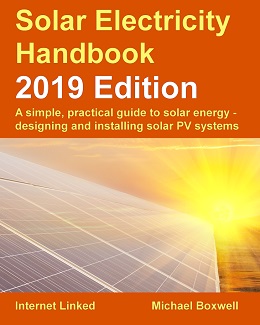Tl:Dr is there no aio that connects to the main panel just like a grid tie?
Long story:
I had paid an engineer for a design for a grid tied system then the utility removed net metering and doing the math grid tied doesn't make sense anymore.
Now I just want a system that will pull simultaneously from the grid, and/or solar panels, and/or battery to power a 200 amp panel, without selling even one kw to the utility. The system will be grid connected 99% of the time
Its an all electric home with well pump, septic pump, 3 ac systems(mini splits) , electric water heater etc. Etc
So far all I'm finding are units that get power from the main disconnect and send power to a sub panel, usually limited to 50a or less. Ie not enough to power close to 200a if needed
I'm also reading about a lot of problems and faults with many of the popular inverters and that's making me question if I should even continue down this road.
It seems the sol-ark 15k will do what I need since it will pass through 200 amps but the price tag is up there and there are several threads discussing problems.
The Schneider Xw pro seems to be rock solid but can only handle 60 amps ac input? So I would need three?
Is there no affordable all in one solution that connects to a main panel like a grid tie inverter and would provider up to 200a? Heck I'll even settle for 150a.
Thanks
Long story:
I had paid an engineer for a design for a grid tied system then the utility removed net metering and doing the math grid tied doesn't make sense anymore.
Now I just want a system that will pull simultaneously from the grid, and/or solar panels, and/or battery to power a 200 amp panel, without selling even one kw to the utility. The system will be grid connected 99% of the time
Its an all electric home with well pump, septic pump, 3 ac systems(mini splits) , electric water heater etc. Etc
So far all I'm finding are units that get power from the main disconnect and send power to a sub panel, usually limited to 50a or less. Ie not enough to power close to 200a if needed
I'm also reading about a lot of problems and faults with many of the popular inverters and that's making me question if I should even continue down this road.
It seems the sol-ark 15k will do what I need since it will pass through 200 amps but the price tag is up there and there are several threads discussing problems.
The Schneider Xw pro seems to be rock solid but can only handle 60 amps ac input? So I would need three?
Is there no affordable all in one solution that connects to a main panel like a grid tie inverter and would provider up to 200a? Heck I'll even settle for 150a.
Thanks




